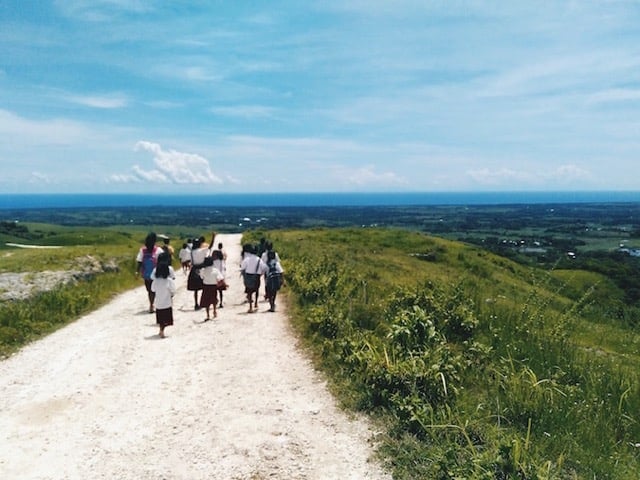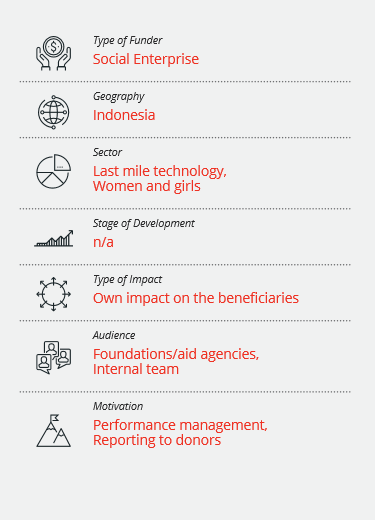Kopernik use of data collection apps which allowed large and quick data collection. They also developed an overall framework for women’s empowerment and technology adoption to understand their impact.
DIMENSIONS
Typically, begin by developing a programme’s theory of change and logic model mapping out two stages of outcome — intermediate and long term outcomes. Additionality and attribution are more complex questions and at this stage, the organisation is primarily focussed on contribution. Track outcomes over time therefore some assessment of additionality by looking at a control group and starting with a baseline. When programmes have similar theory of change and key indicators, it is easier to aggregate. However, Kopernik does think not everything is comparable and it is important to make that distinction when presenting impact data.
FRAMEWORKS
Kopernik developed their own impact assessment frameworks for women’s empowerment and technology adoption by drawing upon multiple frameworks and indicators used by peers. The women’s empowerment framework shares a number of indicators used and promoted by groups like Energia, ExxonMobil Foundation and WOCAN.
IMPLEMENTATION
Kopernik uses a number of ‘impact tracker technologies’ – ICT tools designed for M&E and communication – based on their own research. For data collection, Kopernik has adopted digital applications (Magpi and CommCare), however continue to work on improving the quality and consistency of the data collected. Other impact tracker technologies include SMS platforms and remote sensors. For big projects a baseline survey is conducted within one month of recruitment (sales agents) and baseline surveys are conducted closer to the date of purchase of the product. They build ~10% of the total budget for Monitoring and Evaluation when pitching for projects. Also look for grant funding to fund IA for bigger projects. Have a dedicated team with an overlap with portfolio managers.
PRESENTATION
The website is their primary tool and presentation includes impact snapshots, blogs with impact stories and engaging photos and write ups. Also rely on social media to communicate their impact. In the future, Kopernik plans to publish more impact assessments both aggregated across relevant programs and at the project level.


















